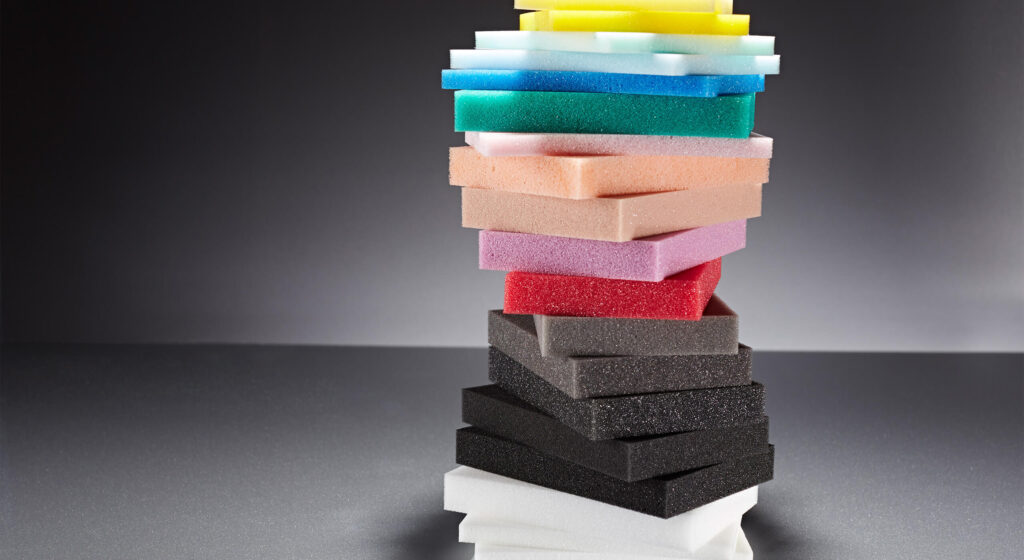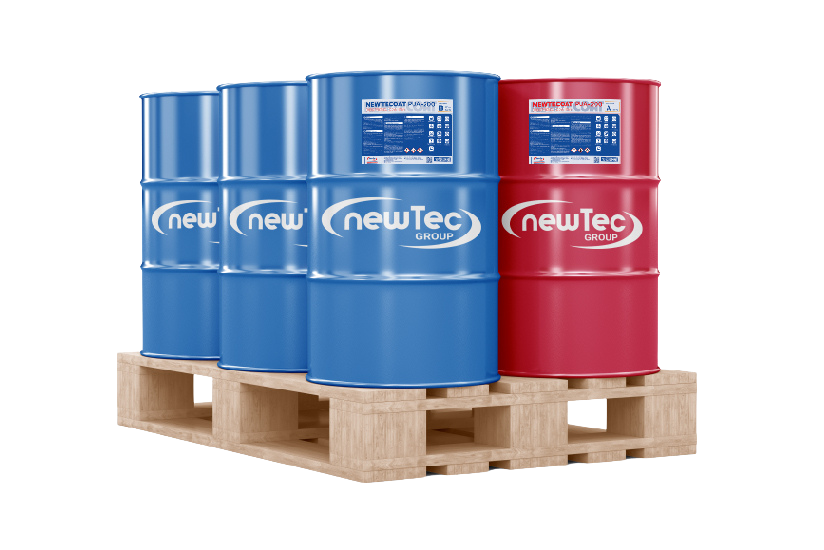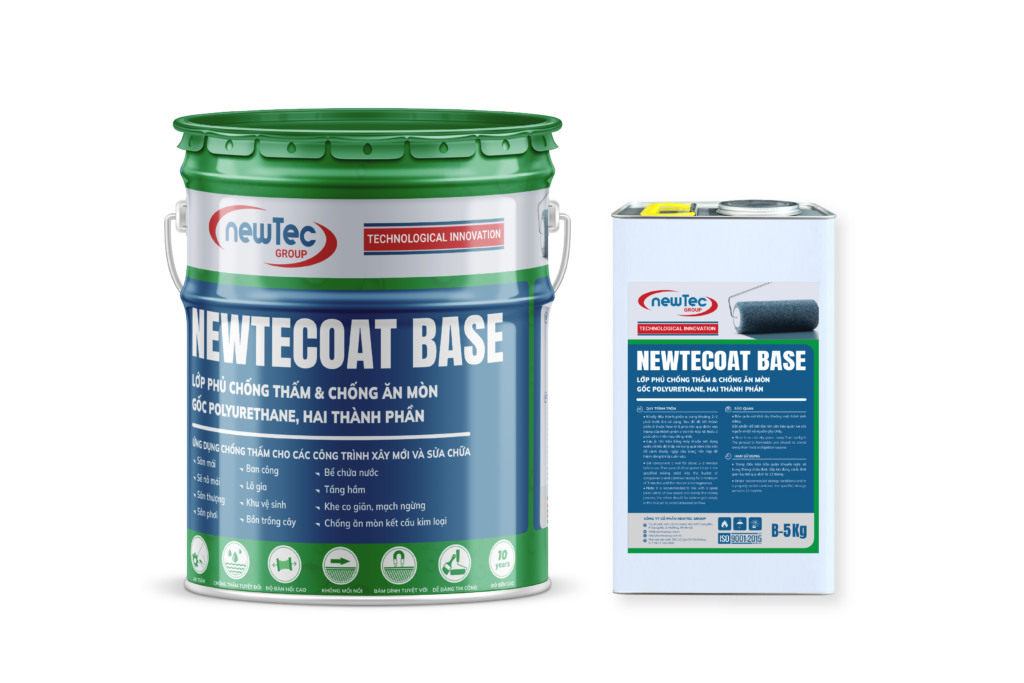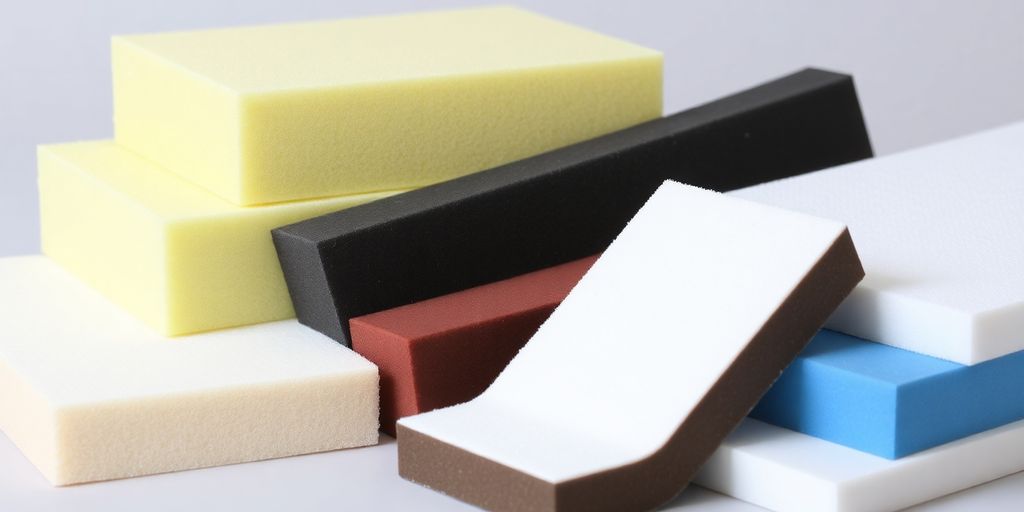Polyurethane foam is everywhere. From the cushion you’re sitting on to the insulation in your walls, it’s a material that’s both versatile and widely used. But what exactly is it made of? In this guide, we’ll break down the components and uses of polyurethane foam made of, making it easy to understand. Whether you’re curious about its environmental impact or how it’s made, we’ve got you covered.
Key Takeaways
- Polyurethane foam is made from a mix of chemicals that react to form a polymer.
- There are different types of foam, like flexible and rigid, each with its own uses.
- The production process involves careful control of ingredients and conditions.
- Polyurethane foam is used in many industries, from construction to furniture.
- While it’s useful, there are environmental and health considerations to keep in mind.
Understanding Polyurethane Foam
Definition and Basic Properties
Polyurethane foam, often abbreviated as PU foam, is a material known for its versatility and adaptability. It’s created from a mixture of chemicals that react to form a foam with a cellular structure. This structure can be manipulated to produce different types of foam, from soft and flexible to hard and rigid. One of the standout features of polyurethane foam is its ability to be tailored for specific uses, whether it’s cushioning in furniture or insulation in buildings.

Understanding Polyurethane Foam
Historical Development and Innovations
The journey of polyurethane foam began in the mid-20th century, with its invention credited to Dr. Otto Bayer in 1937. Initially, it was used in military and aerospace applications due to its lightweight and insulating properties. Over the decades, innovations have expanded its use into everyday products. From the 1950s onwards, polyurethane foam made its way into the automotive and construction industries, revolutionizing how we think about comfort and efficiency.
Common Misconceptions
Despite its widespread use, there are some myths about polyurethane foam. One common misconception is that all foams are the same, but in reality, their properties can vary greatly depending on their formulation. Another myth is that polyurethane foam is harmful to the environment. While it’s true that traditional foams have environmental impacts, newer formulations are more eco-friendly, and recycling initiatives are on the rise.
Polyurethane foam is more than just a material; it’s a testament to human ingenuity, evolving from a specialized product to a staple in various industries. Its adaptability continues to drive innovation and improve everyday life.
Chemical Composition of Polyurethane Foam
Key Ingredients and Their Roles
Polyurethane foam is crafted from a mix of chemicals that react to form a versatile material. The primary ingredients include polyols and diisocyanates. Polyols are alcohol-based compounds that provide the backbone of the foam, while diisocyanates, such as toluene diisocyanate, act as hardening agents. These ingredients react to create the essential polyurethane structure. The chemical structure of polyurethane foam features a hard segment composed of toluene isocyanate extended by propylene glycol, while the soft segment is made from a hydrocarbon chain derived from palm oil polyol.
The Polymerization Process
The creation of polyurethane foam involves a chemical reaction known as polymerization. During this process, the polyols and diisocyanates are combined under specific conditions, causing them to link together in long chains. This reaction generates heat and causes the mixture to expand, forming the foam. The result is a lightweight yet strong material that can be tailored to different densities and hardness levels.
Environmental Considerations
When discussing the environment, it’s important to consider both the production and disposal of polyurethane foam. The production process can release volatile organic compounds (VOCs), which contribute to air pollution. Manufacturers are working on reducing these emissions by developing more eco-friendly formulations. Additionally, the disposal of polyurethane foam poses challenges, as it doesn’t break down easily in landfills. Recycling and reusing foam materials are becoming more common practices to address these environmental concerns.
Polyurethane foam’s adaptability and widespread use come with the responsibility of considering its environmental impact. By focusing on sustainable practices, the industry can continue to innovate while minimizing harm to the planet.
Types of Polyurethane Foam
Flexible vs. Rigid Foam
Polyurethane foam comes in two main types: flexible and rigid. Flexible foam is soft and squishy, often used in furniture cushions and mattresses. It bends easily and returns to its original shape quickly, making it perfect for comfort applications. Rigid foam, on the other hand, is tough and firm. It’s used for insulation in buildings and appliances because it keeps its shape and provides excellent thermal resistance. Choosing between flexible and rigid foam depends on the specific needs of the application.

Flexible vs. Rigid Foam
Open-Cell vs. Closed-Cell Structure
Polyurethane foam also varies by cell structure. Open-cell foam is lightweight and airy, with cells that aren’t completely closed. This type of foam is softer and more flexible, allowing air and moisture to pass through. Closed-cell foam, however, has cells that are fully sealed, making it denser and more water-resistant. Closed-cell foam offers better insulation and strength but is heavier and less flexible than open-cell foam.
Specialty Foams and Their Applications
There are also specialty foams designed for specific uses. Memory foam, for example, is a type of flexible polyurethane foam that molds to the shape of the body, providing support and comfort in bedding and seating. High-resilience foam is another type, known for its durability and support, often used in high-end furniture. Reticulated foam, with its open-cell structure, is used in filtration and soundproofing applications.
Polyurethane foam’s versatility makes it a go-to material in many industries, from construction to automotive. Its ability to be tailored to specific needs—whether soft and flexible or strong and rigid—demonstrates its unique adaptability.
Manufacturing Process of Polyurethane Foam
Raw Material Sourcing and Preparation
The journey of making polyurethane foam starts with gathering raw materials. Typically, the main ingredients include polyols and diisocyanates. These are the building blocks of the foam. These chemicals are crucial because they react to form the polyurethane polymer. Before anything else, these materials are carefully checked for quality to make sure they meet specific standards. This step is important because any impurities can mess up the final product.
Production Techniques and Equipment
Once the raw materials are ready, they go into the production phase. The process involves mixing the polyols and diisocyanates in precise ratios. This is usually done using specialized equipment like high-pressure mixing heads. The mix is then poured into molds or onto conveyor belts, depending on the type of foam being made. For instance, molded polyurethane foam is shaped using molds, which is a bit like baking a cake. The foam expands and solidifies into its final form.
Quality Control Measures
After production, the foam undergoes rigorous quality checks. These checks ensure the foam meets the required specifications for density, resilience, and other properties. Quality control might involve physical testing, like compression tests, or chemical analysis. It’s a bit like giving the foam a report card to see if it makes the grade. If any issues are found, adjustments are made in the production process to fix them.
Ensuring high-quality foam is essential for its performance in various applications, from insulation to furniture. This attention to detail in the manufacturing process guarantees that the foam will serve its purpose effectively and safely.
Applications of Polyurethane Foam
Construction and Insulation
Polyurethane foam is a superstar in the world of construction. It’s used widely for insulation because it helps keep buildings energy-efficient. Imagine a wall that keeps your house warm in winter and cool in summer—that’s what this foam can do. It acts like a barrier, reducing the amount of heat that escapes or enters a building. Plus, it’s lightweight and can be sprayed or injected into hard-to-reach places, making it super versatile for construction projects.
Furniture and Bedding
When you sink into a comfy sofa or mattress, there’s a good chance flexible polyurethane foam is at play. This foam is used in furniture and bedding because it’s soft yet supportive. It molds to your body, providing comfort while maintaining its shape over time. You’ll find it in couches, chairs, mattresses, and even carpet underlays. It’s all about making sure you have a comfy place to relax.
Automotive and Transportation
In the automotive world, polyurethane foam is a big deal. It’s used in car seats, headrests, and even in the dashboard to provide comfort and safety. The foam helps absorb impact, which is crucial in case of accidents. Besides comfort, it also plays a role in noise reduction, making your ride quieter and more pleasant. And because it’s lightweight, it helps improve fuel efficiency, which is a win-win for everyone.
Polyurethane foam’s versatility is what makes it so essential across different industries. From keeping us comfortable in our homes to ensuring safety in our cars, this material plays a role that’s both silent and significant.
Advantages and Disadvantages of Polyurethane Foam
Benefits in Various Industries
Polyurethane foam is like the Swiss Army knife of materials. It’s used in tons of different industries because it’s so versatile. In construction, it’s a go-to for insulation, keeping homes warm in the winter and cool in the summer. In the furniture world, it’s what makes your couch cushions comfy yet supportive. And don’t forget about the automotive sector, where it helps with everything from seating to noise reduction.
Here’s a quick look at some of the benefits:
- Insulation Efficiency: Polyurethane foam provides excellent thermal insulation, which is why it’s popular in the building industry.
- Comfort and Support: In furniture, it offers a balance of softness and support, making it ideal for seating.
- Lightweight and Durable: Despite its light weight, it holds up well over time, which is why it’s used in so many applications.
Potential Health and Safety Concerns
But it’s not all sunshine and rainbows. There are some concerns about polyurethane foam, especially when it comes to health and safety. During production, some chemicals used can be harmful if not handled correctly. Once the foam is made, it’s generally considered safe, but there are still debates about its long-term effects.
Some issues to keep in mind:
- Chemical Exposure: Workers can be exposed to harmful chemicals during the manufacturing process.
- Flammability: Polyurethane foam can be highly flammable unless treated with flame retardants.
- Off-Gassing: New foam products might release volatile organic compounds (VOCs), which can be a concern for indoor air quality.
Comparisons with Other Materials
When you stack polyurethane foam against other materials, it holds its own pretty well. Rigid polyurethane foam, for example, is known for its density and durability, making it a strong contender against other building materials.
Here’s a quick comparison:
| Property | Polyurethane Foam | Other Materials |
|---|---|---|
| Thermal Insulation | Excellent | Varies |
| Weight | Lightweight | Varies |
| Durability | High | Varies |
While polyurethane foam has its downsides, its benefits in terms of insulation and versatility often outweigh the negatives. Still, it’s important to consider the specific needs of your project when choosing materials.
Future Trends in Polyurethane Foam Technology
Sustainability and Eco-Friendly Innovations
The focus on eco-friendly solutions is reshaping the polyurethane foam industry. Manufacturers are now exploring bio-based alternatives to traditional petroleum-based ingredients. This shift is driven by the growing demand for sustainable products. Companies are investing in research to develop foams that break down more easily in the environment, reducing their ecological footprint. Innovations like water-blown foams and recyclable materials are just the beginning of this green revolution.

Sustainability and Eco-Friendly Innovations
Advancements in Material Science
Material science is pushing the boundaries of what polyurethane foam can achieve. New formulations are being tested to enhance the foam’s durability, flexibility, and thermal properties. Scientists are experimenting with nanotechnology to improve insulation capabilities and make foams more resistant to wear and tear. These advancements are expected to open up new applications in various industries, from construction to consumer goods.
Market Growth and Opportunities
The polyurethane foam market is on an upward trajectory, with a projected CAGR of 6.50% by 2032. This growth is fueled by technological advancements and a heightened awareness of energy efficiency. As industries continue to seek out materials that offer better performance and sustainability, polyurethane foam is becoming a go-to choice. The market is ripe for innovation, with opportunities in sectors like automotive, where lightweight and energy-efficient materials are in high demand.
As the world shifts towards more sustainable practices, the polyurethane foam industry is poised to play a significant role. With ongoing research and development, the future looks promising for both manufacturers and consumers seeking eco-friendly solutions.
Wrapping It Up
So, there you have it. Polyurethane foam is like this super handy material made from a mix of chemicals that react to form a foam. It’s used in all sorts of stuff, from the cushions on your couch to insulation in your house. It’s pretty versatile, which is why you see it everywhere. Whether you’re lounging on a comfy chair or keeping your home warm, which is probably playing a part. It’s one of those things you might not think about much, but it’s kind of everywhere, making life a bit more comfortable and efficient. So next time you sit down on a soft seat or enjoy a cozy room, you might just give a little nod to this unsung hero of materials.
Read more: Is Polyurethane Foam Toxic? Understanding Its Impact on Health and Environment





You may also be interested in
Understanding What Polyurethane Foam When Burned Gives Off: Health Risks and Safety Precautions
Polyurethane foam is commonly used in many products, from furniture to insulation. However, when it
May
Exploring the Question: Is Polyurethane Durable Enough for Everyday Use?
Polyurethane is everywhere, from the cushions on your couch to the insulation in your walls.
May
Exploring the Truth: Is Polyurethane Eco Friendly in Today’s World?
Polyurethane is everywhere these days, from your furniture to your sneakers, but is polyurethane eco
May
Trusted Polyurea Manufacturer for Philippines Supporting Industrial and Construction Excellence
The polyurea market in the Philippines is poised for significant growth from 2025 to 2031,
May
The Role of a Reliable Polyurea Manufacturer for Malaysia in Enhancing Construction Quality
Polyurea coatings have become increasingly vital in Malaysia’s industrial and construction sectors due to their
May
Reliable Polyurea Manufacturer for Cambodia Supporting Industrial and Construction Growth
Polyurea coatings are increasingly recognized for their vital role in the industrial and construction sectors,
May
Meet the Leading Polyurea Manufacturer for Thailand Powering Industrial Applications
Polyurea coatings have become an essential solution in various industrial sectors due to their exceptional durability, rapid curing times, and resistance to
May
Exploring Polyurea Manufacturer & Custom Coating Options in Southeast Asia
Polyurea coatings have become a game-changer in the protective coatings industry due to their remarkable
May